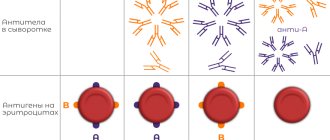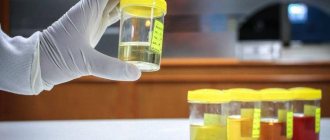Get tested for “Group B Streptococcus” at the CIR Laboratory
Group B streptococci (Strept. Agalactiae) are bacteria that are found in the lower intestines of 10-35% of healthy men and in the vagina and/or lower intestines of 10-35% of healthy women. Group B streptococci should not be confused with group A streptococci, which cause strep throat. Individuals who have group B streptococci in their body but do not cause any symptoms are called carriers of the bacteria. Carriage of group B streptococci is not contagious, i.e., it is not transmitted by contact from person to person. These microbes are a normal part of the body's microflora. In most cases they do not cause any problems. However, under certain conditions, group B streptococci can cause severe infections. This condition is called B-streptococcal disease (BSD).
Who can get B-streptococcal disease?
- In the United States, 15,000 to 18,000 newborns and adults each year develop severe ABS, causing sepsis, airway inflammation, and other dangerous infections.
- About half of all cases of ASB affect newborns, entering their body during childbirth from the body of the carrier mother.
- Group B streptococci cause septic infections in pregnant women, entering the uterine cavity, amniotic fluid, uterine incisions after cesarean section, and the urinary tract. More than 50 thousand cases of such infections in pregnant women are registered annually in the United States.
- 35-40% of ASB affects the elderly or chronically ill.
Diet
Diet 13 table
- Efficacy: therapeutic effect after 4 days
- Time frame: no more than 2 weeks
- Cost of products: 1500-1600 rubles per week
During the treatment period, it is recommended to adhere to the principles of diet Table No. 13 . The diet should be light, the products should contain a large amount of vitamins. It is preferable to steam or boil dishes. Food should be taken in small portions - up to 6 times a day.
Proper drinking regime is also very important. It is recommended to consume up to two and a half liters of fluid per day, as drinking plenty of fluids helps remove toxins from the body. You should drink a lot of water, weak tea, a decoction of chamomile and rose hips, as well as drinks made from berries and fruits. In general, food should be varied.
During this period, it is recommended to exclude the following products from the menu:
- Spicy food.
- I'll bake it.
- Fatty soups and broths.
- Sausages and canned food.
- Strong coffee and tea.
- Alcohol.
Group B streptococci and your baby
Frequency of ASB in newborns
About 8,000 newborns develop severe ASB every year. Up to 800 of these children die, and up to 20% of those who survive B-streptococcal meningitis remain disabled.
In newborns, ASB is the most common cause of sepsis (blood poisoning) and meningitis (infection of the lining of the brain and cerebrospinal fluid) and one of the common causes of pneumonia in newborns. ASB is a more common cause of disease than such well-known infections as rubella, congenital syphilis and spina bifida. Many of those who survive, especially after meningitis, subsequently suffer complications such as hearing or vision loss, varying degrees of mental retardation and cerebral palsy.
How do newborns get ABS?
In the vast majority of cases, children come into contact with group B streptococci during childbirth; In addition, microbes can enter the uterine cavity due to premature rupture of the membranes (leakage of water). Babies come into contact with germs when bacteria move from the vagina into the uterine cavity. In addition, infection can occur as the baby passes through the birth canal. Babies become infected by swallowing germ-contaminated amniotic fluid or inhaling bacteria. There is an assumption that group B streptococci can pass through intact membranes and infect the fetus. In such cases, they can cause premature birth, stillbirth and miscarriage.
Risk factors for ASB
A risk factor for ASB is prematurity, due to general weakness of the body and immaturity of the immune system. Premature infants who develop ASB have a greater risk of permanent complications and/or death. However, since most babies are born at term, 70% of cases of ASB occur in full-term infants.
The majority (80%) of cases of neonatal ASB occur during the first week of life. Most babies become ill within a few hours of birth. With the early onset of the disease, children experience the following symptoms: disturbances in thermoregulation, wheezing, convulsions, breathing problems, unusual behavioral abnormalities, hypertonicity or severe muscle hypotonicity.
In addition, ASB can develop in infants from a week to several months after birth (late onset ASB). Meningitis develops more often with late onset of ASB. About half of the cases of late onset ASB are associated with a mother who is a carrier of group B streptococci. In the remaining children, the source of infection remains unknown. The following symptoms are characteristic of late onset of ASB: muscle hypertonicity or hypotonicity, constant crying, fever, refusal to feed.
Diagnosis of ASB in newborns
To determine the cause of the disease, blood cultures, x-rays and other tests are performed.
Signs of infection
Common symptoms of streptococcal infections:
- increased local or general body temperature;
- itching, burning, dryness in the larynx;
- swelling and redness of the tonsils, the formation of a yellow or grayish coating on the mucous membranes;
- nasal congestion followed by thick greenish or yellow discharge;
- sharp pain and congestion of the ear canal, serous discharge mixed with pus.
Most people have a natural high tendency to become infected with streptococci. When one or another type of infection is transmitted, the so-called entrance gates become inflamed. Laryngitis, pharyngitis, sore throat, and otitis occur. When microbes spread from foci of infection, the lower respiratory tract, brain, kidneys, intestines and other organs are affected. Secondary infections include processes involving autoimmune mechanisms: rheumatoid arthritis, streptococcal vasculitis, glomerulonephritis.
Streptococci are common causes of toxic and necrotic complications, including severe fever, abscesses and sepsis.
Group B streptococci in pregnant women
Is group B streptococcus a sexually transmitted disease?
Group B streptococci are part of the normal vaginal flora and are not a sexually transmitted disease. Carriage of group B streptococci is not associated with increased sexual activity.
Should pregnant women be tested for group B streptococcus?
The Center for Immunology and Reproduction recommends testing for group B streptococcus in all pregnant women. It is advisable to do the first examination in the first trimester of pregnancy, especially if there have been miscarriages or premature births in the past. It is advisable to repeat the examination at 35-37 weeks of pregnancy. This examination can help save your child's life.
A positive test result means that the mother is a carrier of group B streptococcus. This does not mean
that the mother has streptococcal disease, or that her child will definitely get sick. A positive test result will help the doctor and the pregnant woman to correctly plan the further management of pregnancy and childbirth (prophylactic use of antibiotics). The results of the examination should be ready by the time of admission to the maternity hospital.
Maternal risk factors for the development of ASB
- Positive test results for group B streptococci;
- ASB in a child after a previous birth;
- group B streptococci in the urine (symptomatic or asymptomatic bacteriuria);
- rupture of membranes (leakage of water) earlier than 18 hours before birth;
- contractions or rupture of membranes during pregnancy less than 37 weeks;
- fever during childbirth;
- age under 20 years.
Treatment with folk remedies
Treatment with folk remedies is possible only as an auxiliary method, and it can be practiced only after consultation with a doctor. Such methods in no case can replace antibacterial therapy. It is generally recommended to gargle with herbal decoctions, as well as take decoctions and teas that stimulate the immune system.
- Products and decoctions with vitamin C. To provide the body with vitamin C, which is a natural immunostimulant, it is recommended to drink tea with lemon, consume other citrus fruits, prepare cranberry juice, drinks from currants, sea buckthorn, and viburnum.
- Apricot pulp . Fresh apricots should be eaten on an empty stomach, morning and evening. It is also recommended to apply apricot pulp to the affected skin.
- Rose hip decoction . 100 g of rose hips should be poured into 0.5 liters of water and boiled for 5 minutes. After a few hours, you can drink the broth - a glass twice a day.
- Garlic and onion . These vegetables should be included in your menu every day as they are natural antibacterial agents.
- Herbal infusions for gargling . For this purpose, infusions of chamomile, string, sage, and calendula are prepared by pouring 20 g of the selected herb into 200 ml of boiling water. After half an hour, the infusion is filtered and used to gargle.
- Elderberry . A decoction of the flowers of this plant should be taken twice a day, 150 ml, prepared at the rate of 30 g of raw material per 250 ml of water. Elderberries also have antibacterial properties.
Prevention of ASB
How can you prevent B-streptococcal disease in newborns and mothers?
To reduce the risk of developing ASB in newborns, the most effective was the prophylactic administration of antibiotics to the mother in labor. It is better if the administration of antibiotics begins no later than 4-6 hours before delivery. If a woman is at risk, the earlier antibiotics are administered during labor, the lower the risk of developing ASB.
To reduce the risk of developing ASB, prophylactic antibiotics are recommended for all women who begin labor or break water before 37 weeks of pregnancy.
Since antibiotics can have side effects, which in most cases are quite mild, but in rare cases can be quite serious, the decision to prescribe antibiotics is made by the doctor, taking into account the balance of positive and negative factors of using these drugs. A woman in labor should definitely inform doctors about allergic reactions to antibiotics in the past.
Caesarean section does not reduce the risk of developing ASB.
Unfortunately, no prevention regimen is 100% effective.
Some women who subsequently develop ASB do not have risk factors. Therefore, we strongly recommend that all pregnant women be tested for carriage of group B streptococci.
Classification
Microbiology identifies certain types of streptococci that are important in medicine. Depending on the lysis of red blood cells , Streptococcus spp (several species) is divided into the following types:
- Hemolytic streptococcus type alpha . Alpha hemolytic streptococcus causes partial hemolysis . Bacteria belonging to this group are also called viridans streptococcus. This group includes: Streptococcus pneumoniae, Streptococcus thermophilus, as well as viridans streptococci Streptococcus mutans, Streptococcus mitis, Streptococcus salivarius, Streptococcus sanguis, etc.
- Beta-hemolytic - causes complete hemolysis. This group includes a number of streptococci, which are divided into serogroups. This group includes: Streptococcus pyogenes; some strains of S. dysgalactiae subsp. equisimilis and Streptococcus agalactiae anginosus, Streptococcus agalactiae; streptococci from serogroup C, which predominantly cause diseases in animals; bacteria of serogroup D. Bacteria of this type are the most pathogenic.
- Gamma streptococcus is a non-hemolytic streptococcus. The non-hemolytic type of bacteria is harmless; it does not provoke the development of hemolysis.
Doctors also identify the following important types of this pathogen:
- Pyogenic streptococcus (Streptococcus pyogenes) - previously a representative of this group had the name Streptococcus haemolyticus. This group includes beta-hemolytic streptococci of group A. Streptococcus pyogenes has a cell diameter of 0.6-1 microns. Many strains of Streptococcus pyogenes form a capsule. Streptococcus pyogenes in most cases produces streptokinase, streptodornase, streptolysins, and sometimes an erythrogenic toxin. Pyogenes is present in the normal microflora of the pharynx and can cause various diseases.
- Streptococcus pneumoniae - belongs to the group of pneumococcal infections. The pathogen is a coccus and does not form spores. In the body it forms a capsule, chemoorganotrophs, facultative anaerobes. It parasitizes the respiratory tract and provokes the development of acute pneumonia and bronchitis.
- Streptococcus faecalis (fecal), Streptococcus faecies are group D streptococci. Fecal streptococcus (Streptococcus faecalis) and Streptococcus faecies are combined into the group of enterococci. In the body they provoke septic processes
- Streptococcus salivarius (Streptococcus thermophilus), Streptococcus sanguis, Streptococcus mutans, Streptococcus mitis - hemolytic and non-hemolytic streptococci. They belong to different serogroups. Their participation in the formation of dental plaque has been proven. Their etiological role in the development of caries is noted. Streptococcus mitis is one of the causative agents of infective endocarditis. Mitis settles in the mouth and nose, in the upper respiratory tract.
- Streptococcus oralis is one of the types of bacteria that lives in the oral cavity. Oralis forms small colonies on Wilkins-Chalgren agar plate.
- Streptococcus viridans - belongs to a non-taxonomic group of commensant low-pathogenic streptococcal bacteria. This bacterium received the name “viridans” because some of its representatives give a green color during hemolysis (from the Latin Viridis - “green”).
- Streptococcus lactis is a lactic acid bacterium.
- Streptococcus anginosus - is part of the normal microflora . However, when the number increases under the influence of certain factors, Streptococcus anginosus can provoke the development of diseases. In particular, anginosus provokes abscesses of the brain and liver.
- Streptococcus agalactiae is the causative agent of mastitis in cattle and small cattle. Agalactia poses a particular danger to newborns. Causes sepsis, pneumonia, peritonitis .
Speaking about the varieties of streptococci, it should be noted that patients sometimes confuse them with another pathogen - staphylococcus. Thus, the concept of “epidermal streptococcus” is actually erroneous: when talking about the infection “streptococcus epidermis,” they mean Staphylococcus epidermidis, which inhabits the human epidermis and provokes infections after surgical interventions.
The definition of “streptococcus aureus” is also erroneous. Staphylococcus aureus is an aerobic bacterium that causes a number of diseases. The Latin name for this bacterium is Staphylococcus aureus (aureus). That is why it is sometimes mistakenly called streptococcus aureus.
Is there a vaccine against ASB?
Currently, many laboratories are working to create a vaccine against group B streptococci. It is hoped that the introduction of such a vaccine into practice will help save many newborns and reduce the risk of premature birth.
Is it possible to get pregnant again if the newborn had ASB after a previous birth?
Women who have had problems with group B streptococci in the past should report this to their antenatal clinic and maternity hospital. Prevention of ASB can prevent the development of ASB in subsequent pregnancies, and children will be born healthy and free of streptococci.
Group B streptococci and breastfeeding
Breastfeeding is not a risk factor for transmitting streptococcus from mother to child. Carrier women can breastfeed their children. Of course, hands and nipples must be clean.
List of sources
- Anokhin V.A. Streptococcal infection in children and adolescents // Practical medicine. - 2008. - No. 7(31). — P. 8-14.
- Atlas of medical microbiology, virology and immunology / Ed. A. A. Vorobyova, A. S. Bykova. - M.: Medical Information Agency, 2003. - P. 37.
- Gostishchev V.K., Lipatov K.V., Farkhat F.A. Streptococcal infection of soft tissues: clinical features, diagnosis, treatment. Almanac of Clinical Medicine. 2006;XI:17-21.
- Pokrovsky V.I., Briko N.I., Ryapis L.A. Streptococci and streptococcosis. - M.: GEOTAR-Media, 2008. - 540 p.
- Totolyan A.A. Group B streptococci in human pathology. - St. Petersburg: Man, 2009.
Researching
For analysis of Streptococcus agalactiae in men, as a rule, the following biological materials are taken:
- Oropharyngeal smear (for diseases of the upper respiratory canals).
- A smear from the urethra (for pathologies of the genitourinary system).
- Examination of nasal sputum.
- Taking a scraping of the skin surface (with the development of erysipelas).
The following studies are also being conducted:
- Donation of blood and urine.
- Biochemical blood test.
- Carrying out bacteriological culture.
- Ultrasound examination of internal organs.
- Carrying out chest radiography and electrocardiography.
Diagnostics
For differential diagnosis of primary and secondary agalactia, instrumental and laboratory research methods are used:
- Ultrasound of the mammary glands to determine the formation of the glandular component;
- blood test for prolactin;
- if necessary, CT scan of the brain (detection of neoplasms, structural changes in the hypothalamic-pituitary system).
One of the methods for diagnosing agalactia is ultrasound
Based on the results of the examination, a clarifying extended diagnosis may be recommended with the involvement of related specialists (endocrinologist, therapist, surgeon, psychotherapist).
Microflora of the urogenital tract in men examined for chronic prostatitis
Treatment of chronic inflammatory pathology of the urogenital tract in men has always been a difficult task in urology. Treatment for these diseases, especially those complicated by impaired fertility, sexual dysfunction, pelvic pain syndrome, can be successful if done individually and based on knowledge of the etiology of the inflammatory process, immunoreactivity to this inflammatory process and morpho-functional changes in the pelvic organs.
In widespread medical practice, at present, when diagnosing the etiological factor of inflammatory pathology of the urogenital tract, the emphasis is on identifying sexually transmitted infections. The purpose of this study is to demonstrate the significance of other, no less important, etiological factors, as well as the place of STIs in the pathogenesis of this group of inflammatory diseases. An infectious inflammatory process in the urogenital tract occurs by two mechanisms.
In the first case, a virulent STI causes clinically and laboratory identifiable urethritis, which subsequently leads to the occurrence of an ascending inflammatory process. The pathogenetic role of sexually transmitted infection in this case is obvious: when examining discharge from the urethra, prostate secretion, seminal fluid, a significant increase in the number of leukocytes and STIs is revealed; The primary inflammatory process begins with the clinical picture of urethritis. Patients with an inflammatory process of this nature are most often treated in dermatovenerological dispensaries, when in addition to acute venereal disease there is a prostatitis clinic.
The second mechanism is more complex. The occurrence of an infectious inflammatory process in the urogenital tract in this case is preceded by certain predisposing factors.
Let's highlight several main groups:
- The first group of factors includes vascular, trophic and morpho-functional changes in the pelvic organs, which arise as a result of congestion in the pelvic organs, habitual intoxication and other reasons. These changes are well known and widely discussed in the specialized domestic literature.
- Infravesical obstruction is also a predisposing cause of infectious inflammation. In this case, a retrograde flow of urine occurs into the acini of the prostate gland at the time of urination due to an increase in intraurethral pressure. This can lead to infection of the prostate gland by microflora from the overlying urinary tract.
- The most important predisposing cause of the inflammatory process of the urogenital tract is secondary immunodeficiency, which develops against the background of a sluggish bacterial intracellular infection (chlamydia, mycoplasma) and persistent viral infection (urogenital herpes, cytomegalovirus). Infection of the urogenital tract with this microflora leads to a characteristic disturbance of phagocytic activity (HCT test), a decrease in class A immunoglobulins with an increase in class G immunoglobulins; disruption of T helper and T suppressor interaction. Secondary immunodeficiency, as well as certain morpho-functional changes in the pelvic organs open the way to infection of the urogenital tract with banal pathogenic and conditionally pathogenic bacterial microflora.
With the development of an infectious process in the urogenital tract according to this mechanism, there is no clinical manifestation of urethritis, in studies of discharge from the urethra there will be no significant increase in the number of leukocytes, in scrapings from the urethra STIs will be detected much less frequently, however, patients will have a clinically and laboratory identifiable inflammatory process in the prostate-vesicular complex or in the scrotal organs.
In the presence of the above predisposing factors, infection of the urogenital tract with banal bacterial microflora is fundamentally possible in two ways: transurethral and hematogenous.
Hematogenous infection most often occurs from foci of chronic infection with concomitant ENT pathology, diseases that are widespread among the population; for diseases of the rectum with chronic constipation, hemorrhoids (especially with frequent exacerbations). Infection through this route most often occurs when there are already pronounced structural changes in the prostate gland (congestion, calcifications, BPH).
The transurethral route of infection with secondary bacterial microflora is more significant. Four main sources of bacterial infection should be identified.
- Widespread bacterial vaginosis in women. According to the Preobrazhenskaya Clinic, women examined for inflammatory diseases of the genital organs were diagnosed with bacterial vaginosis in 20% of cases. The cause of bacterial vaginosis is small opportunistic rod flora, which often leads to infection of the urogenital tract of men. The cause of bacterial vaginosis is sluggish bacterial and persistent viral infections, hormonal disorders and other causes that cause secondary immunodeficiency. In married couples, women suffering from bacterial vaginosis and husbands are much more likely to have chronic prostatitis than women with inflammatory gynecological diseases, but not having bacterial vaginosis.
Table of microorganisms most often found in the genital organs of women with inflammatory diseases caused by gardnarella vaginalis and non-spore-forming bacteria. (collection of works of UrNIIDVII, 1985)
| Types of microorganisms. | Morphological features. |
| Garnarella vaginalis | Coccobacilli single, paired, polymorphic |
| Undifferentiated species | Coccobacilli polymorphic |
| Coryneforms | Club-shaped sticks |
| Bifidobacteria | The rods are variable, often with forked ends. |
| Bacterioids | Rods, coccobacilli, often bipolarly colored |
| Lactobacilli | Polymorphic shelves, often arranged in long filaments. |
| Anaerobic cocci | Cocci, solitary, in groups or in chains. |
| Aerobic cocci | Cocci, chains, tetrads, clusters. |
| Propionibacteria | Polymorphic rods, club-shaped, coccoid. |
| Cellos | Cocci, diplococci, clusters or chains. |
| Fusobacteria | The rods are large, polymorphic, often long with pointed ends, and may have thickenings in the center. |
- The prevalence of oral-genital and anal sexual intercourse is also a source of infection of the urogenital tract of men. In the first case, infection occurs predominantly with streptococcal or staphylococcal microflora, in the second case - with Gr-bacillus flora (Proteus, Klebsiella, Escherichia coli, etc.).
Clinical case.
Patient N13603 Igor Nikolaevich, 30 years old, applied on May 16. 98 years old with complaints of pelvic pain. Examined at UrNIIDVII for the presence of STIs - gonorrhea, trichomoniasis, candidiasis, gardnarellosis, chlamydia, ureaplasmosis, mycoplasmosis, HSV were not found, in the secretion of the prostate gland there were 20-40-80 leukocytes per p/z, there was no evidence of extragenital inflammatory pathology. A bacteriological study of prostate secretions was performed. Staphylococcus with hemolysis and Gr+ bacillus with hemolysis were detected, TMC 10x9 in 1 ml of discharge. Upon further questioning, it was found that the family regularly practices oral-genital sex, and the wife suffers from chronic tonsillitis and sinusitis with frequent exacerbations. The wife (N13784 Anna Sergeevna, 29 years old) was referred to an otolaryngologist. A bacteriological study of tonsil washings revealed staphylococcus with hemolysis, Gr+ rod with hemolysis, TMC 10x6 in 1 ml of discharge, the presence of chronic tonsillitis and sinusitis in the subacute phase was confirmed.
- Iatrogenic infection by hospital microflora during urethral therapeutic or diagnostic procedures, which are widespread at present.
- Infection from the upper urinary tract and bladder, especially in the presence of bladder outlet obstruction.
The mechanism for the development of bacterial inflammation in the urogenital tract, when its cause is not sexually transmitted infections, is clearly presented below.
The purpose of this work was to analyze the microflora in patients examined for chronic prostatitis. In addition to examinations for STIs, over 1996-98, the Preobrazhenskaya Clinic performed more than 200 bacteriological cultures on men for various indications.
Bacteriological research of prostate secretions is carried out on the basis of the bacteriological laboratory of the UrNIIDVII. Before collecting the material, the patient is asked to empty the bladder and toilet the glans penis and preputial sac. Next, a massage of the prostate gland is performed, its secretion is placed in a test tube with a storage medium - sugar broth. Test tubes in a thermostat are delivered to the bacteriological laboratory within 40-60 minutes, where the material is immediately dispersed into 4 nutrient media: meat peptone agar, blood agar, Endo medium and Sabour medium. After 24 hours, for further identification of the pathogen, subculture is carried out on appropriate nutrient media (for example, to identify staphylococcus in yolk-salt agar to assess lyceto-vitellase activity, in blood plasma to assess plasma-coagulating activity). After 5 days, the results are “read”, pure cultures are transferred to media with disks soaked in antibacterial drugs, and after 24 hours the antibiogram is “read”.
The study group included only those patients who, despite the presence of clinical and laboratory data for the inflammatory process in the prostate-vesicular complex, did not have any data for inflammation in the urethra, those who met the following conditions below.
- Minimum scope of examination: smear analysis, examination of prostate secretions, examination for chlamydia, ureaplasmosis, mycoplasmosis, chronic gonorrhea, blood for HIV, RW, bacteriological examination of prostate secretions, ultrasound of the prostate gland with a transrectal sensor.
- The entire examination complex was completed within no more than 14 days.
- There is no clinical evidence of urethritis, and in the study of leukocytes discharged from the urethra there are less than 10 leukocytes in the field of view.
- Negative Wesserman reaction and absence of HIV.
Thus, in the study group there were 63 patients in whom 113 microorganisms were isolated in a bacteriological study of prostate secretions. The age of the patients ranged from 20 to 65 years. Let us note a certain pattern in the total degree of leukocytosis in prostate secretions in patients of different age groups.
| Age | Number of persons | % | Leukocyte count min | White blood cell count average | White blood cell count max |
| 20-29 years old | 18 | 28 | 21 | 35 | 65 |
| 30-39 years old | 25 | 40 | 34 | 58 | 101 |
| 40-49 years old | 13 | 21 | 27 | 44 | 93 |
| 50-65 years | 7 | 11 | 24 | 44 | 83 |
In the first age group, due to the fact that the inflammatory process began relatively recently, leukocytosis is still quite moderate. In the second group, where the history of the inflammatory process is already long, and the immune response to the inflammatory process is quite active, leukocytosis is the highest of the groups presented. In the third and fourth groups, despite pronounced structural changes in the prostate gland, leukocytosis decreased again. This may be due to a significant decrease in the immune response during a long-term chronic inflammatory process.
The structure of the identified microflora in the bacteriological study of prostate secretion is presented in Table N1.
The data from the research performed must be assessed with a high degree of criticality for the following reasons:
- This laboratory does not have an anaerostat to perform inoculation under anaerobic conditions, therefore the number of anaerobic microorganisms should be significantly greater.
- A significant increase in opportunistic microflora sometimes obscures the true causative agent of inflammation. During repeated bacteriological examination after treatment, pathogenic microflora are sown much more often. However, this topic is beyond the scope of this work.
Both pathogenic and opportunistic microorganisms were identified. The ratio of pathogenic and opportunistic microorganisms is presented in the diagram.
Microorganisms were sown both as a monoinfection and in associations, which is presented in Table N2.
Thus, it is clear that in 68.2% of cases, in a bacteriological study of prostate secretions, associations of microorganisms are sown. Note that in 46% of those examined (those 29 patients out of 63), microorganisms causing hemolysis of blood agar were identified in the secretion of the prostate gland, and the higher the degree of association, the more often a hemolytic microorganism is detected in its structure. More than half of the patients are diagnosed with STIs, and their detection rate remains almost the same regardless of the degree of association.
These data are presented in table N2.
Table N3 shows the identified hemolytic microflora:
The presented diagram shows that the detection of staphylococcal microflora predominates, which corresponds to the general layout of the detected microflora. Second place is occupied by Gram+ rod flora (unidentified Gr+ rod flora and corynobacteria), and streptococcus is in third place. Separately, we note that a certain part of the Gram-rod flora also exhibits hemolytic activity (12.5% of the total number of identified Gram-bacteria).
We classified all other microorganisms as opportunistic microflora. We decided not to isolate microorganisms from this group, which can be considered more likely to be saprophytes. In our opinion, it is necessary to classify a particular microorganism as a saprophytic microflora individually, taking into account all clinical and laboratory diagnostic data.
Opportunistic microflora is presented in Table N4.
Based on the structure of pathogenic and conditionally pathogenic microflora, it is easy to notice that the detected coccal microflora, especially streptococcal microflora, is also characteristic of chronic diseases of the oral cavity. Gr+ and Gr- rod microflora are a common causative agent of bacterial vaginosis in women; in addition, Gr- rod microflora is often a hospital microflora and an infection detected in chronic inflammatory diseases of the urinary system.
In 33 patients i.e. In 52.4% of those examined, in the absence of clinical and laboratory signs of an inflammatory process in the urethra, STIs were detected.
The identified STIs are presented in Table N5.
Gonorrhea was identified by examining scrapings from the urethra using the PCR method.
Yeast cells were detected during bacterioscopic examination of urethral discharge or in bacteriological examination of prostate secretions with identification to species. Chlamydia was identified by examining scrapings from the urethra using PCR or PIF or by the presence of class M immunoglobulins for infection. Ureaplasmosis and mycoplasmosis were identified by examining scrapings from the urethra using the PCR method. HSV and CMV were identified by examining scrapings from the urethra using PCR or by the presence of class M immunogobulins for infection.
A comparative analysis of the detection rate of STIs in patients in two groups was carried out:
Group 1 - bacteriological culture of prostate secretion contains a pathogen, Group 2 - bacteriological culture reveals only opportunistic microflora.
The obtained data are presented in table N6.
Thus, it is clear that candidiasis, ureaplasmosis, mycoplasmosis, and viruses are detected equally in both groups. But in the group with pathogenic microflora, gonorrhea and chlamydia are detected much more often. In practice, in patients with clinical and laboratory data of an inflammatory process in the prostate-vesicular complex and in the presence of chlamydia, hemolytic bacterial microflora is always cultured!!!
Another reason why this work was done is demonstrated by the following diagram.
Conclusions:
- In all patients examined for chronic prostatitis in the absence of clinical and laboratory data of acute or chronic urethritis, bacteriological examination of prostate secretions revealed nonspecific bacterial microflora. In 46% of patients (29 out of 63 people), pathogenic (hemolytic) microflora was detected.
- In 54% of patients, opportunistic microflora was identified; the pathogenicity of this microflora is assessed based on the specific clinical situation, taking into account all examination data.
- In 68% of cases, microorganisms were sown by associations. Moreover, the higher the degree of association, the more often a microorganism with hemolytic activity was identified in it.
- The structure of the bacterial microflora of the urogenital tract in men (both with and without hemolytic activity) suggests its possible source is bacterial vaginosis and diseases of the oral cavity in sexual partners, as well as, possibly, a hematogenous route of infection.
- In 52.4% of patients, in the absence of clinical and laboratory data of acute or chronic urethritis, sexually transmitted infections were detected. Moreover, in cases where gonococci or chlamydia were determined in scrapings from the urethral mucosa by the PCR method, hemolytic microflora was determined during bacteriological examination of prostate secretions.
- Considering the fairly pronounced resistance of the identified microflora to antibacterial drugs, it is recommended to include bacteriological culture of prostate secretions in the examination program for patients with inflammatory diseases of the urogenital tract.
Zhuravlev V.N., Vlasenko L.Yu., Pankov V.I.
Possible complications
One of the main questions for a urologist is whether bacterial prostatitis can be cured? If you start therapy in a timely manner and strictly follow all the doctor’s recommendations, it is quite possible to achieve long-term remission and even complete cure.
But patients do not always turn to a specialist on time. The reason may be banal shame or the absence of symptoms. With prolonged development of the disease, complications arise:
- increased swelling;
- prostate abscess;
- pathologies of the testicles and appendages – vesiculitis, orchitis;
- kidney and urinary tract diseases;
- prostate hyperplasia;
- oncology;
- infertility.
The spread of infection leads to more serious problems and worsening pathology.
Antibiotics
Treatment of bacterial prostatitis in men is based on complex regimens. Antibiotics are the main group of drugs included in the therapy program. Antibacterial drugs are selected taking into account the sensitivity of the infectious agent. Broad-spectrum drugs penetrate well into prostate tissue. These include:
- Fluoroquinolone group – have pronounced antimicrobial activity, disrupt the synthesis of bacterial DNA, which leads to their death. There are 4 generations of drugs. The most commonly prescribed drugs are Ofloxacin, Ciprofloxacin and others.
- Tetracyclines are active against gram-positive pathogens. Tetracycline, Doxycycline.
- The macrolide group is considered the least toxic antibiotics. They have a bacteriostatic effect and retain a high concentration in tissues. These include: Leukomycin, Azithromycin and others.
In addition to antibiotics, patients suffering from a chronic form of the pathology are prescribed the following drugs:
- alpha-blockers – normalize blood and lymph flow, relieve vascular tone;
- decongestants – Omnik and others;
- painkillers;
- non-steroidal anti-inflammatory drugs;
- to maintain immunity - a complex of vitamins and immunomodulators.
The treatment includes physical therapy, and prostate massage is often used to improve drainage of the prostate gland. Laser therapy shows good results.
How long to treat bacterial prostatitis? The disease is quite complex and requires a long course of therapy - taking antibiotics for 4 - 8 weeks. After this, a recovery period will be required.
Causes of the disease
The cause of bacterial prostatitis is damage to the prostate gland by gram-negative microorganisms:
- chlamydia trachomatis - chlamydia;
- streptococcus – streptococci;
- staphylococcus aureus – Staphylococcus aureus;
- klebsiella - klebsiella;
- pseudomonas aeruginosa – Pseudomonas aeruginosa;
- enterobacter – enterobacters;
- trichomonas vaginalis - trichomonas;
- escherichia coli – Escherichia coli;
- neisseria gonorrhoeae - gonococci;
- proteus - proteas;
- enterococcus - enterococci.
Such microorganisms cause bacterial prostatitis in the presence of other predisposing factors. The chronic form of the disease is usually caused by polymicrobiality.





